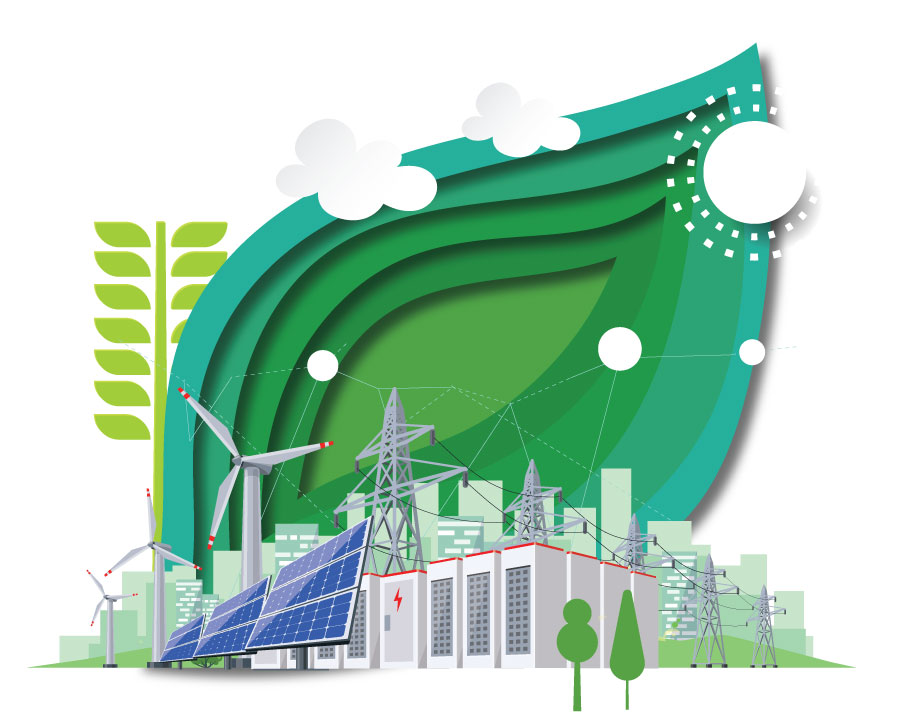Energy Blog: Carbon, Carbon Everywhere
Energy Blog: Carbon, Carbon Everywhere


As carbon emissions continue to escalate around the world, new technologies and strategies emerge to try and rein them in.
Carbon capture, carbon storage, carbon sequestration—however you put it, there are so many ways to take carbon dioxide out of the air, with more methods, technologies and studies popping up than ever as researchers around the world are touting new ways to transform carbon into something new.
Just this past week, a team at West Virginia University announced the development of a technology that can capture CO2 in the air and use it to manufacture methanol. The process pulls air from buildings, with the methanol production system hooking up directly to rooftop HVAC units atop commercial and residential buildings. The system could also make carbon-free hydrogen by using a rooftop solar panel or other renewable energy source to power solid oxide electrolysis cells, capable of splitting water into oxygen and hydrogen. Then, by adding a catalyst, the carbon, hydrogen and oxygen gases could be transformed into easy-to-transport liquid methanol and easily piped from the top or side of the building into a tanker truck.
Last month, the U.S. Department of Energy awarded a grant to help the $4.9 million first phase of the Pelican Gulf Coast Carbon Removal study. The consortium is led by Louisiana State University, with Shell and the University of Houston, and will evaluate the feasibility of building a direct air capture (DAC) hub in Louisiana. The technology will capture CO2 directly from the atmosphere and use it to manufacture products or store it permanently in deep geological formations.
Back in March, Lehigh University researcher Arup SenGupta developed a way to capture CO2 from the air and transform it into baking soda. This technology uses a copper-containing polymeric filter and essentially converts CO2 into sodium bicarbonate (aka baking soda) that can be released harmlessly into the ocean. This new hybrid material, or filter, is called DeCarbonHIX, short for decarbonization through hybrid ion exchange material. Research has even demonstrated a 300 percent increase in the amount of carbon captured compared to existing direct air capture methods.
Around the same time, GE announced the successful demonstration of its scalable direct air capture system. It coupled the research team’s experience with thermal management solutions and heat exchangers with chemistry and material systems in developing sorbent materials that can remove CO2 from the air. GE’s team noted using a similar approach in a project with the Defense Advanced Research Projects Agency to capture potable water from extremely desert-like air.
But that’s not all the carbon. Last week, the National Renewable Energy Laboratory unveiled research that shows how buildings across the U.S. could reduce carbon emissions. The lab noted that buildings comprise 40 percent of total U.S. energy use, generating 35 percent of carbon emissions. This makes decarbonizing buildings just as important as snagging carbon from the atmosphere. NREL’s data set, called the End-Use Load Profiles, details how buildings do and could use energy. This data set also shows the massive climate impacts that improvements to the U.S. building stock could have. One what-if example showed that Ohio's residential housing stock could reduce its total energy use by 68 percent by implementing basic insulation and air sealing improvements and switching to high-efficiency electric appliances and heat pumps. Another example showed that Texas could reduce its energy consumption by 45 percent with the same efficiency improvements and electrification strategies.
But with all the research, questions remain as to how fast these solutions could work and what long term impacts they would ultimately have. In fact, researchers at Seoul National University in South Korea published a study in July that suggests removing CO2 from the atmosphere may not be a guaranteed solution for climate change. “Hemispherically asymmetric Hadley cell response to CO2 removal,” published in Science Advances, found that by conducting “large-ensemble experiments where CO2 concentrations are systematically increased and then decreased to the present-day level, [the researchers] show that the poleward-shifted HC edge in a warming climate does not return to its present-day state when CO2 concentrations are reduced.”
But the efforts will and should continue. The National Oceanic and Atmospheric Administration reported earlier this summer that global average atmospheric CO2 was 417.06 parts per million in 2022, setting a new record high. The increase between 2021 and 2022 was 2.13 ppm, marking the 11th year in a row where the amount of carbon dioxide in the atmosphere increased by more than 2 ppm.
And in August, the Department of Energy announced a whopping $1.2 billion that will go toward the development of two commercial-scale direct air capture facilities in Texas and Louisiana. These projects are the first of this scale in the United States and will remove more than 2 million metric tons of CO2 emissions from the atmosphere annually. The agency reported that this is the world’s largest investment in engineered carbon removal in history.
Fingers crossed that it will help.
Louise Poirier is senior editor.






